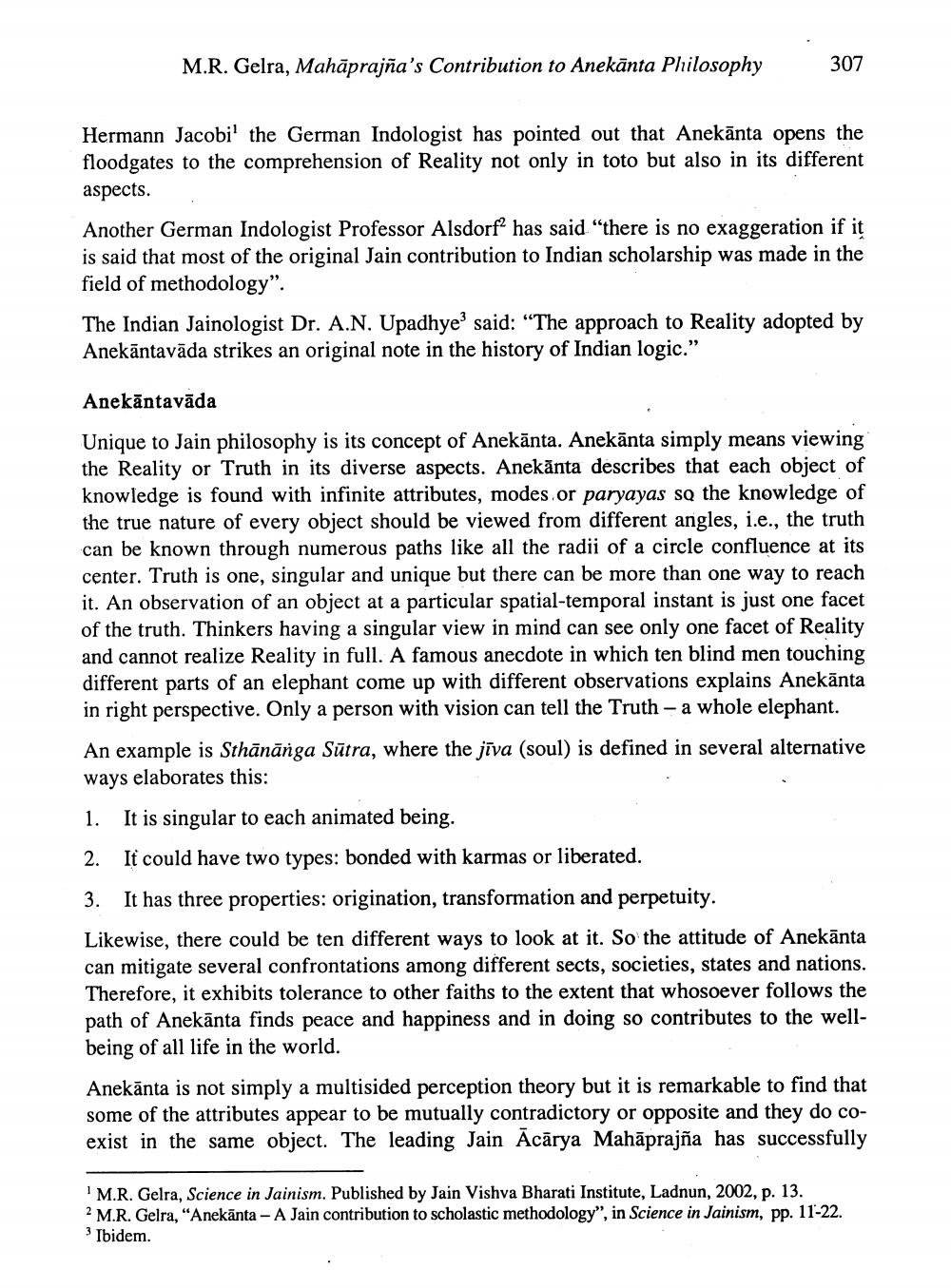________________
M.R. Gelra, Mahāprajña's Contribution to Anekānta Philosophy
307
Hermann Jacobi' the German Indologist has pointed out that Anekānta opens the floodgates to the comprehension of Reality not only in toto but also in its different aspects. Another German Indologist Professor Alsdorf has said "there is no exaggeration if it is said that most of the original Jain contribution to Indian scholarship was made in the field of methodology”. The Indian Jainologist Dr. A.N. Upadhye said: "The approach to Reality adopted by Anekāntavāda strikes an original note in the history of Indian logic."
Anekāntavāda
Unique to Jain philosophy is its concept of Anekānta. Anekānta simply means viewing the Reality or Truth in its diverse aspects. Anekānta describes that each object of knowledge is found with infinite attributes, modes or paryayas so the knowledge of the true nature of every object should be viewed from different angles, i.e., the truth can be known through numerous paths like all the radii of a circle confluence at its center. Truth is one, singular and unique but there can be more than one way to reach it. An observation of an object at a particular spatial-temporal instant is just one facet of the truth. Thinkers having a singular view in mind can see only one facet of Reality and cannot realize Reality in full. A famous anecdote in which ten blind men touching different parts of an elephant come up with different observations explains Anekānta in right perspective. Only a person with vision can tell the Truth - a whole elephant. An example is Sthānānga Sūtra, where the jīva (soul) is defined in several alternative ways elaborates this: 1. It is singular to each animated being. 2. It could have two types: bonded with karmas or liberated.
3. It has three properties: origination, transformation and perpetuity. Likewise, there could be ten different ways to look at it. So the attitude of Anekānta can mitigate several confrontations among different sects, societies, states and nations. Therefore, it exhibits tolerance to other faiths to the extent that whosoever follows the path of Anekānta finds peace and happiness and in doing so contributes to the wellbeing of all life in the world.
Anekānta is not simply a multisided perception theory but it is remarkable to find that some of the attributes appear to be mutually contradictory or opposite and they do coexist in the same object. The leading Jain Acārya Mahāprajña has successfully
M.R. Gelra, Science in Jainism. Published by Jain Vishva Bharati Institute, Ladnun, 2002, p. 13. 2 M.R. Gelra, "Anekānta - A Jain contribution to scholastic methodology", in Science in Jainism, pp. 11-22. 3 Ibidem.




